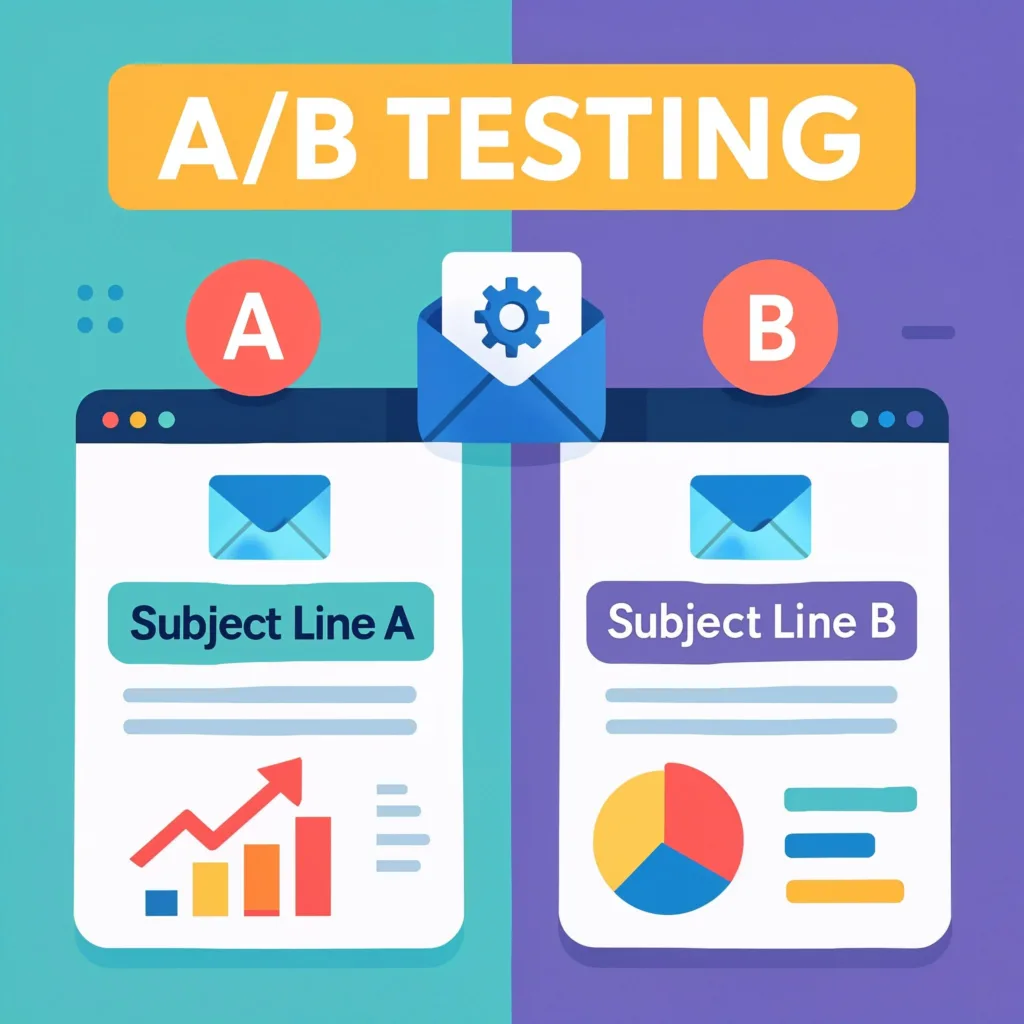
A/B Testing for Subject Lines: The Smart Way to Boost Email Opens in 2025
Introduction: Why Your Subject Lines Matter More Than Ever
In the crowded inbox of 2025, you only get one shot to grab your subscriber’s attention. The truth is, even the best content falls flat if your email never gets opened. That’s where A/B testing for subject lines comes in. With inbox competition at an all-time high, marketers who test and tweak their subject lines see dramatically higher open rates—and ultimately, better conversions.
If you’ve ever wondered why some emails get opened immediately while others get ignored, you’re not alone. Crafting the perfect subject line isn’t guesswork. It’s data-driven and strategic. In this post, you’ll learn how to do A/B testing for subject lines the smart way, what to test, and how to use your results to grow your business sustainably.
What Is A/B Testing for Subject Lines and Why Does It Work?
Let’s break it down simply. A/B testing for subject lines means sending two different subject lines to a small percentage of your audience. After seeing which version performs better, you send the winning version to the rest of your list. This is also known as split testing.
Why does it work so well? Because people respond differently to words, tone, and even emojis. What you think will grab attention might not resonate with your audience at all. But real data doesn’t lie. With A/B testing for subject lines, you stop relying on gut feelings and start relying on measurable results.
For example, a subject line like “Don’t Miss This!” may sound urgent, but “Save 20% Today Only” might perform better because it’s more specific. Every audience is unique. Testing reveals those subtle differences that can mean hundreds more opens with zero extra cost. Moreover, testing is easier than ever with tools like Mailchimp, ConvertKit, and GetResponse. They make it easy to run tests automatically, so there’s no reason not to do it.
A/B Testing for Subject Lines: What Elements Should You Test?
When learning A/B testing for subject lines, many beginners only change a word or two. However, there are multiple elements you can test to uncover what truly drives opens.
1. Length – Test short vs. long subject lines. For instance, “Exclusive Offer” vs. “Exclusive 20% Off Just for You.”
2. Personalization – Try adding the recipient’s name or location. “Amy, Here’s Your Gift!” feels more personal than “Here’s Your Gift!”
3. Tone – Formal vs. casual language can change how people respond. For B2B, a professional tone may win, while B2C might prefer playful copy.
4. Questions vs. Statements – “Are You Ready for Summer?” vs. “Get Ready for Summer.”
5. Emojis – Some audiences love them; others don’t. Test “ Big News Inside!” vs. “Big News Inside!”
Don’t change everything at once. Test one variable at a time for clear results. Also, run your test on a decent sample size—sending to just 20 people won’t be reliable. Well-executed A/B testing for subject lines means you’re always learning what works and what doesn’t.
A/B Testing for Subject Lines: How to Read and Use Your Data
Running a test is one thing; using the insights is another. Many marketers run a test but never implement the findings long-term. To truly benefit from A/B testing for subject lines, you need to track your results consistently and apply what you learn.
Open rates are your primary metric here. However, don’t stop there. Sometimes a catchy subject line gets an open but doesn’t lead to clicks or conversions. So check click-through rates (CTR) too. If the open rate is high but CTR is low, your subject line might be misleading.
Here’s a simple process to follow:
-
Run your test on 10–20% of your list.
-
Analyze the open rates, CTR, and unsubscribes for each version.
-
Pick the winning subject line for the remaining subscribers.
-
Record what worked—was it the question, urgency, or emoji?
-
Use these insights to shape future campaigns.
Over time, this creates a library of what resonates with your audience. That’s why A/B testing for subject lines isn’t just a one-time trick. It’s an ongoing strategy that compounds your results.
Pro Tips to Improve A/B Testing for Subject Lines
If you want to get the most from A/B testing for subject lines, here are a few expert tips to keep in mind.
-
Test Frequently: Audience preferences shift. A subject line that works today might flop next month. So keep testing.
-
Segment Your Audience: What works for one segment might not work for another. If you have different buyer personas, test subject lines for each one.
-
Keep a Swipe File: Save high-performing subject lines. Analyze what made them work and adapt them for future campaigns.
-
Stay On-Brand: Testing doesn’t mean you should sound clickbait-y. Your subscribers will lose trust if your subject line doesn’t match your content.
-
Use Preheaders Too: The preheader text works alongside your subject line. Test combinations for even better open rates.
Implementing these habits ensures that your A/B testing for subject lines actually impacts your bottom line and doesn’t become an afterthought.
Conclusion: Small Tweaks, Big Wins
If you want to get more opens, more clicks, and ultimately more revenue from your email marketing, mastering A/B testing for subject lines is non-negotiable. It’s one of the easiest, most cost-effective ways to improve your results—without needing more subscribers or bigger budgets.
Start small: test length, tone, or personalization. Track your results and adjust your strategy. Over time, you’ll gain priceless insights into what your audience loves—and your open rates will prove it.
In the noisy world of 2025, you can’t afford to guess what works. So make testing your secret weapon. Because with the right A/B testing for subject lines, every email you send has the power to stand out, get opened, and drive results.